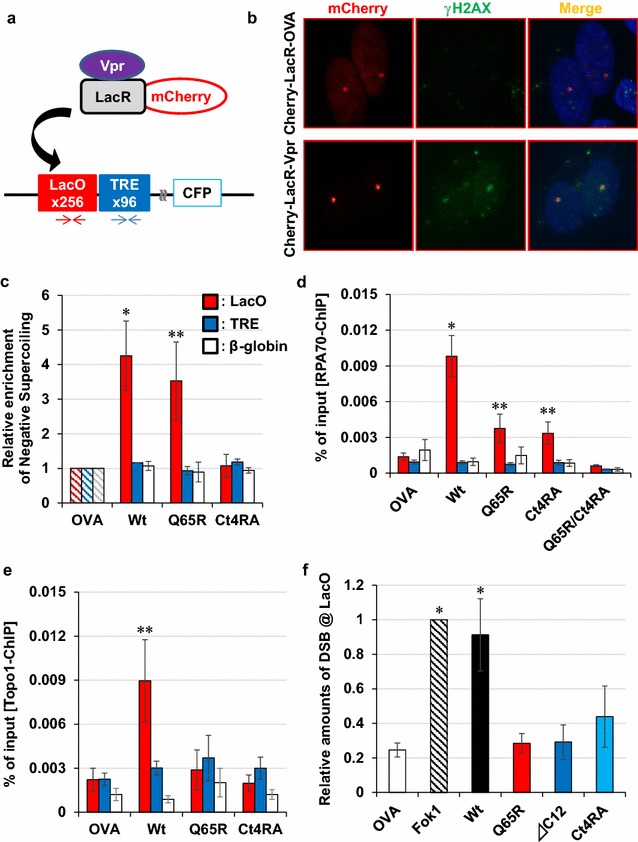Fig. 5.

Forced accumulation of Vpr induces DDR in the targeted region. a Schematic of experiments using the LacO/LacR system. In U2OS/2-6-3 cells, 200 copies of p3216PECMS2β, which contains 256 copies of the LacO sequence and 96 copies of the tetracycline response element (TRE) upstream of the CFP coding region are integrated into a single site. In this cell lines, the LacR-Vpr fusion is forcibly recruited to the LacO repeat region (curved arrow). Arrows indicate PCR primers used for amplification of the LacO (red) and TRE (blue) regions (nucleotide sequence is shown in Additional file 20: Table S3). b Co-localised signals of Cherry-LacR-Vpr and DDR marker. Phosphorylated H2AX (γH2AX) was detected as a representative DDR marker after 2 days of transfection with indicated construct. c Formation of negatively supercoiled DNA in the Vpr-accumulated region. Two days after transfection, a psoralen-bound DNA was recovered and subjected to qPCR analysis with the primers shown in Fig. 5a. The relative copy numbers of LacO (red column), TRE (blue column), and β-globin (as a negative control; blank column) are shown. Error bars indicate ± SEM. *P < 0.01; **P < 0.05. d Enhanced loading of RPA70 by Vpr. Loading of RPA70 was quantitated by ChIP assay. e Formation of Topo1-cc by Vpr. ChIP assay was performed without cross-linking. MG-132 was treated for 2 h at 50 μM. f DSB induction by Vpr. LM-PCR was performed to measure the amounts of DSB-ends in the LacO repeat region. Each column indicates the amount of DSBs relative to LacR-fused Fok1 (positive control)
